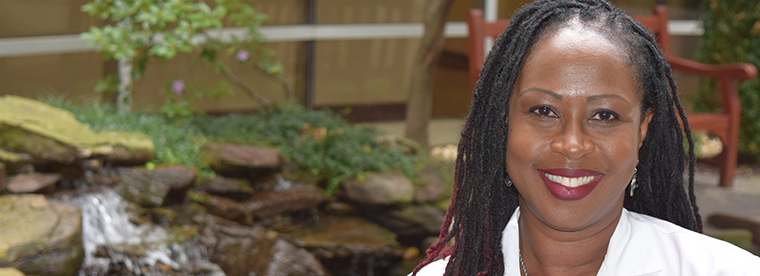Find care now
If you are experiencing a medical emergency, please call 911 or seek care at an emergency room.

Saving Lives in the Hospital…and on a Pier
One Sunday in September, I attended a party at the Fort Washington Marina, on the Potomac River south of Washington. It was after midnight and I was thinking of leaving, but I decided to take a final stroll. Little did I know was going to experience first hand how important it is to learn CPR.
As I walked along the pier, I heard someone scream for the DJ to turn the music off because someone had fallen in the water. I ran to the spot, which was increasingly chaotic. The water there was dark, murky, full of weeds and oily. Some experienced boaters from the marina were trying to locate the victim, and two jumped into that awful water. The scene was highly emotional. The victim’s wife was hysterical as she watched people trying to find her husband.
After repeated attempts, a swimmer dove beneath the dark surface and brought up the lifeless body of an adult African American male, apparently in his late 40s. Several men pulled him onto the pier. Luckily, a few party patrons had medical backgrounds, and were able to spring into action to try to save this man’s life. I was one of those people.
I knew someone had called 911, so I could immediately focus on rescue attempts. An onlooker who happened to be a paramedic felt for a carotid pulse, and started chest compressions. I quickly identified myself as a nurse, and assessed the victim’s airway. He was not breathing. “This man needs rescue breathing,” I said, and the paramedic replied, “Let’s work together.” In an instant, I had done a head-tilt and chin lift. I shouted “30 compressions!” and counted the beat for the paramedic. Then I delivered one breath. As I was about to give another, the man began to breathe on his own. I shouted the news, and called to have him turned on his side to prevent aspiration.
His breathing was shallow at first, but quickly became normal. As I cleared his airway, black sludge came from his nose. I maintained an airway and tried to assess his level of consciousness, saying his name in his ear. He responded once. I let his wife talk to him, knowing he’d recognize her voice. I held his head in my hand, and monitored him until Prince George’s County (Maryland) EMS workers arrived. By then the man had a strong pulse and was breathing normally. The chaos ended, and I went home.
But I wondered about the man’s progress, and wished I had a way to contact the family. A local boater, who had helped with the rescue, gave me the wife’s phone number. I called her and introduced myself. The woman immediately broke down crying. It was two minutes of crying before she could say, “I just want to thank you so much for giving me my husband back.” She said she had feared she’d never be able to locate and thank his rescuers.
This incident reinforced my belief that if you have the opportunity to learn CPR, you need to do it. It always seems like a drag to renew certification, because you feel like you will never use those skills. But you never know, so it is best to remain current. This was the first time I did rescue breathing in my 30 years of nursing. I am so glad I did not leave the party earlier. I saved a life with one breath…WOW!! This incident also shows the power of teamwork. Here was a group of people who did not know each other but worked together, and got the job done. Kudos to all involved!
I am happy to report the victim is recovering. He was air-lifted to a local trauma hospital and placed on a heart/lung machine. He is now off the machine, and breathes with the assistance of a ventilator through a tracheotomy. His family says he remembers nothing about the incident, and asks questions by writing on a tablet. The family, which includes young children, says he “is headed for a long recovery.”
I’m proud I helped rescue someone. But I feel like I save people’s lives every day. I work in cancer care. Yes, I was outside my work area that night, but I just went into work mode. Still, it made me realize the magnitude of the effect. This is someone’s husband. This is someone’s father. This is someone’s child. (I plan to meet with his mother soon). I’m just glad I was there and could render the help when I did. Once a nurse, always a nurse, and always on duty — even when you are not.
Save a life!
Learn CPR (Cardiopulmonary Resuscitation) and Automated External Defibrillator (AED) usage with MedStar Health’s Simulation Training & Education Lab, an authorized American Heart Association Training Center that offers classes in HeartSaver® CPR, AED training and first aid. If you’d like to host a course, contact Cheryl A. Camacho at 202-888-9181| or Cheryl.Camacho@email.sitel.org.
Subscribe to Blog
Get health tips and the latest news in your inbox.














